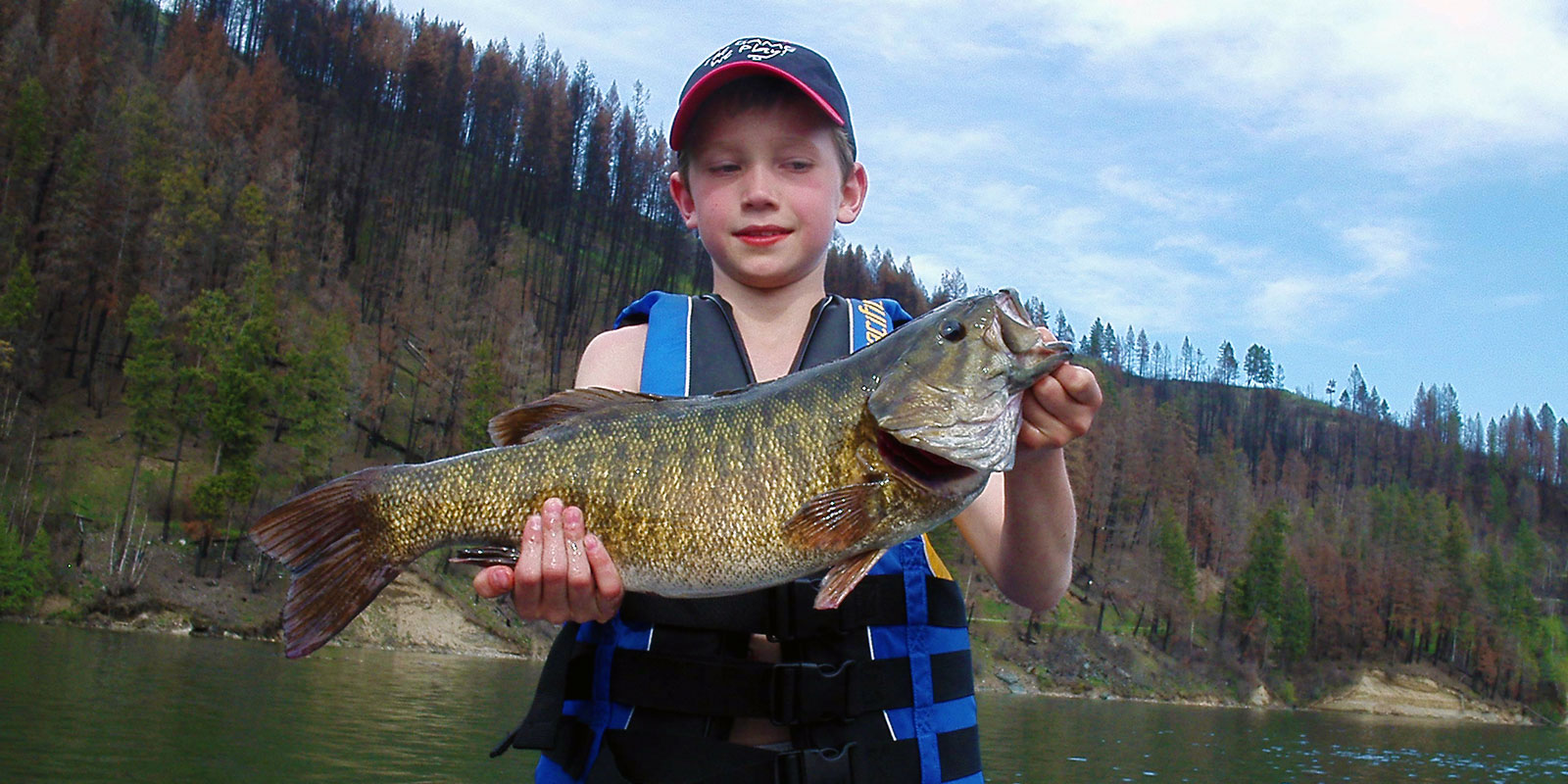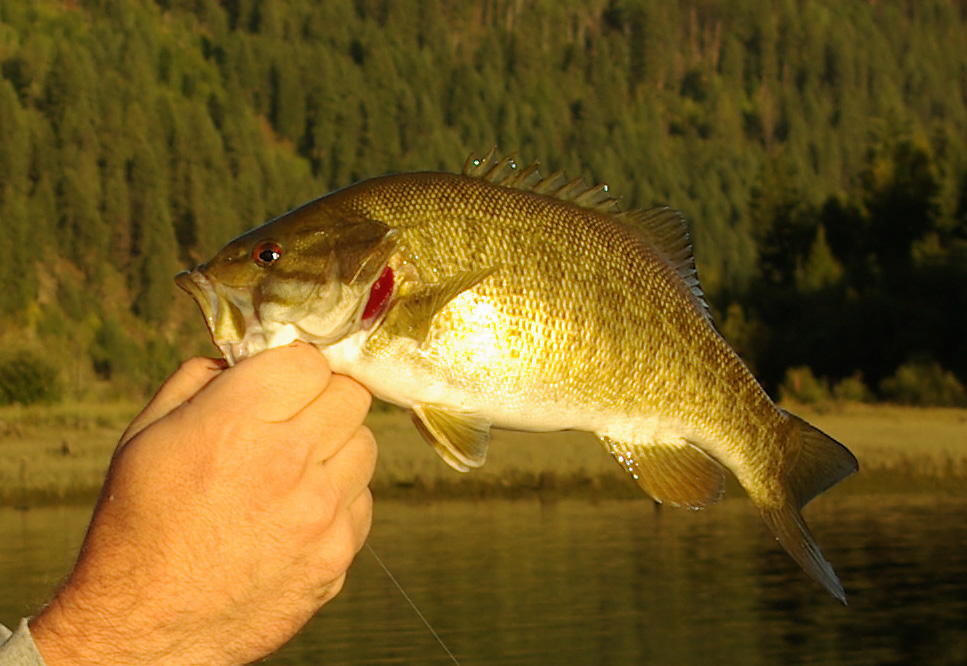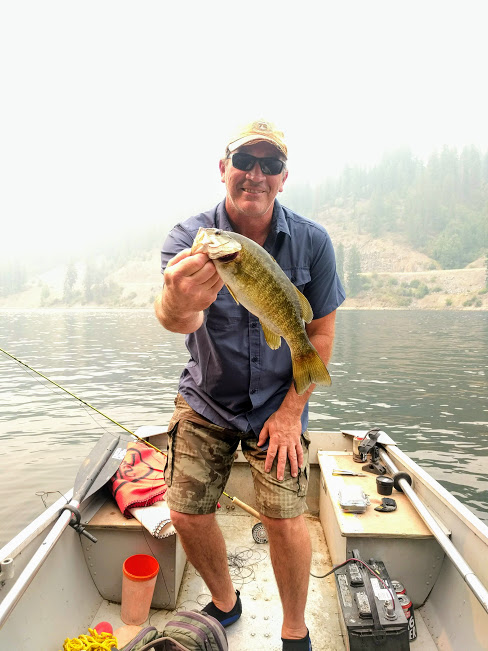Smallmouth and largemouth bass may not be native to the Columbia River and its Pend d’Oreille tributary, but they have certainly made a home here.
Bass are widespread in the Canadian portion of the Pend d’Oreille River (PdO), a tributary that flows north from Lake Pend Oreille in Idaho, through a series of reservoirs, then into Canada and the Columbia River. The surly beasts were first introduced by a U.S. bass hatchery that released 100,000 bass fry annually into the PdO. The bass breached multiple dams on their way to the Columbia and have migrated to a variety of environmentally suitable areas north and south of the border.
Small and largemouth bass have the same basic needs as most creatures: reproduction, security, and food. And, like many of us they, will expend the least possible energy to acquire them.
Bass seek cover in rocks, deadfall, brush, weeds, docks, submerged timber, stumps, holes and ledges. This cover benefits bass twofold. It provides protection from predators such as loons, great blue heron, eagles and osprey as well as offers camouflage to ambush whatever passes by as a passable meal.
Smallmouth generally prefer cooler waters than largemouth and are more often found in rivers and streams whereas largemouth prefer shallow warm lakes with plenty of weeds. They are territorial, but their range varies with their habitat.
Areas with lots of vegetation: reed beds, hydrilla, lily pads, milfoil, and hyacinth are great bass spots because of the cover but also because aquatic plants are great producers of oxygen and are home to a variety of insects, frogs, salamanders, fry, and small mammals.
Robson Reach below Hugh Keenleyside Dame is sated with good weed growth, so bass will cover a small territory due to the high concentration and availability of insects and foraging fish. However, areas that lack appropriate weed growth, the range of a bass may increase dramatically to find enough nourishment.
Bass also require well-oxygenated waters. As water temperatures increase so does their metabolism and the need to feed. In the heat of summer, when the surface temperature rises, bass will seek deeper waters where the optimum layer of cooler water holds the most oxygen just below the thermocline. In the Columbia, bass congregate under the Waneta bridge, and under structure and the rocks in deep pools by Rock Island, with the constant flow of water and oxygen supply, bringing a passing array of insects. Similarly, the mouths of creeks are a good place to locate bass during the heat of summer.



